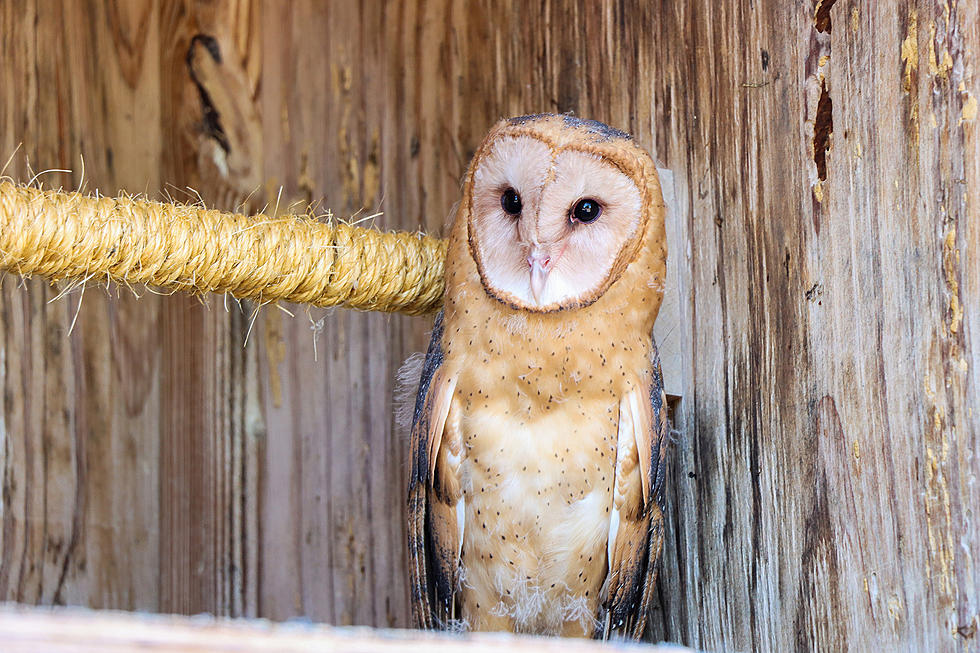
Ambassador Raptors Named at The National Mississippi River Museum and Aquarium
Two raptors brought to the National Mississippi River Museum & Aquarium in recent years have been named in an effort to educate and raise awareness among the public on the importance of conservation.
As indicator species, the Barn Owl and American Kestrel are part of the organization’s outreach and distance learning programs. They serve as Ambassador Animals, educating audiences on the important role these predators play in the ecosystem and inspiring care of our lands and waters.
The Barn Owl was named Cece, which is Latin for the blind one. Its name is a reference to its eyesight. “Most people know that owls have amazing vision in low-light conditions,” says Jennifer Drayna, Education Manager and head of Outreach Programs. “One common misconception is that owls are blind during the daytime, when in fact they have excellent vision at all hours.”
The American Kestrel is named Malar, which refers to the black stripes underneath the raptor’s eyes. The stripes minimize glare to the eyes, similar to how black paint under an athlete’s eyes can help reduce glare on a field under bright lights.
Cece was named by donors Fred and Tracy Fischer, while Malar was named by donors Poppy Conlon and Jason Benson. “Naming these birds is a meaningful way to help our audiences feel closer to the animals and develop empathy with the challenges facing raptor populations. Naming them after characteristics or traits is also a great way to help the public remember some of the educational information they learn about the animals,” Drayna went on to say. “We are excited to see how our audiences engage with Cece and Malar as we begin to conduct more in person outreach programs this summer.”
When not supporting outreach and distance learning programs, Cece and Malar can be found in the River Museum’s new Raptor Roost, located in the boatyard and visible to guests.




